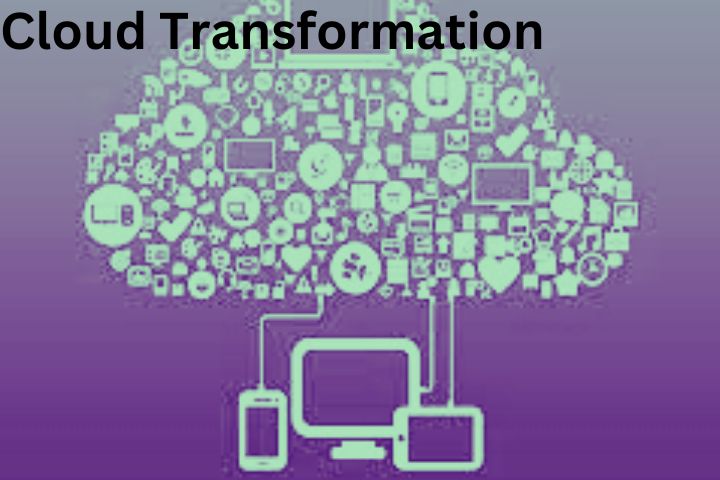
Digitizationinfluences our entire everyday lifeand has turned familiar processes upside down. These changes affect our private lives and formal areas such as education and business processes.
“Digitization” – a term that is on everyone’s lips. Not least because of the corona pandemic, hardly any other buzzword has caused such a stir. The last few years have made it clear to us that the digitization of the education system and the world of work urgently needs to be promoted to remain competitive and included.
Digitization:
Digitization means that analog values are converted into digital values to be processed and stored in this way.
Analog values can be perceived – for example, in the form of hands that move smoothly across the face of a clock. You can also see the times between the two times.
Digital signals, conversely, are sent as clearly defined digits and can therefore be read by machines. That is the great advantage of digitization! The basic principle is to use fixed codes to transmit information electronically.
When discussing digitization, the focus is often on something other than the technical background but the conversion from analog to digital values. Digitization is a synonym for the effects of this transformation.
It is about the introduction and use of digital technology, such as computers and the Internet, and the effects that this digital technology has on our private and business lives.
Processes before digitization
Even if it’s hard to imagine – some time ago, important meetings with companies or authorities only took place personally on-site. Signatures were made by hand. Processes took place via the slow, expensive postal service.
Other content was discussed over the phone. The problem is that the information needs to be in writing after a phone call, leading to subsequent errors and misunderstandings. To fill the gap, the fax machine was invented. But today, it is hardly used any more since fast digital communication in text form has been taken over from e-mails.
In the meantime, even e-mails have become obsolete in many areas.
Advantages of digitization
In this way, technology positively influences our processes in everyday life and at work:
Simpler processes in companies and authorities
You can now buy or sell almost anything online. Communication with authorities, banks, insurance companies, telecommunications providers or energy and utility service providers is also becoming increasingly digital.
For the digitization of processes to result in simplifications, they must function smoothly and intuitively, both for providers and customers. All necessary processes and content must be made possible.
New work models and places
An interesting mind game:
What would the last two years have looked like without the opportunity to work from home? How would we then communicate and work in a pandemic?
Working from home has long been possible thanks to cloud-based systems, VPN connections and tools such as video telephony. This has resulted in more flexible working models in recent years: employees of a company no longer have to live in the same region to be able to cooperate. You no longer have to commute.
In addition, it becomes easier to work with external freelancers to bring additional expertise into your company.
Not only the type of employment is changing, but also the content of the work: Simple tasks are increasingly being taken over by machines and algorithms while new jobs are being created on the other side.
After all, someone has to take over the development and operation of these machines.
Faster transmission and processing of information
Thanks to digitization, processes are not only becoming simpler, but they also run faster. Messages, pictures, numbers and even videos are sent across the globe in seconds.
You can request specific information from your customers and get the answer back similarly without detours.
Our customers report reduced their throughput times by up to 82%. This applies, among other things, to processes that otherwise take place via correspondence and often require long waiting times and correction loops.
Optimization of products and services
Collected data about leads not only helps to optimize the marketing budget but also to offer the best possible service for your customers.
Tools like Google Analytics can tell you a lot about who is interested in your product, how they found out about you, and whether or not they ultimately make a purchase. This information can be used to improve our offers continuously.
Once the product has been purchased, it can easily be rated and recommended online. If your customers have questions or comments, digitization allows them to reach you anytime.
Space-saving archiving
Large numbers of digital documents can be stored on memory chips without taking up much space. It becomes more relaxed in the storage room and on the shelf.
If you are looking for specific information, you can easily find it again using the search functions. Specific content within a document can also be specifically searched for. Cloud-based systems allow this content to be accessed anywhere and from any device.
Freedom for founders
As mentioned above, digital change creates new business models. These are, for example, in software development, advice or training via the Internet, the creation of your webshop, virtual assistance services, entertainment on the Internet and informative media.
User-friendly web applications make it easier for entrepreneurs to build a presence for these services and attract customers. Anyone can obtain the necessary information themselves with a little search effort.
disadvantages of digitization
Restructuring is necessary
Larger corporations, in particular, often have fixed structures and processes that must be adapted to meet the changes in the digital age. For you to miss the connection, these restructurings are necessary.
Tip: If necessary, get expert advice and support during the restructuring.
Anyone who dares to change must inform and train their employees and, first of all, invest in the change.
Change of existing jobs
The restructuring means that certain work areas no longer have to be done by people but can be left to a digital program and automated.
At first, it sounds as if human labour would become superfluous. However, the opposite is the case in practice. Rather, it is about adapting existing jobs, sometimes viewed negatively initially.
Instead, to optimize human labour, employees in digitized processes can be used for less automated processes that require individual decisions and social skills.
In the long term, the goal is that man and machine work together meaningfully to exploit all potential fully.
neglect of personal contacts
Since you no longer have to meet with customers in one place, personal encounters with them sometimes must be addressed. Personal meetings can improve the relationship.
You get to know each other better, can build trust and understand each other better.
Data Security and Cybercrime
Computers are connected via networks, and large amounts of data are sent back and forth. There is often concern that this would make data less secure than the paper form in the on-site office. Data breaches are more common with paper-based data.
Nevertheless, the danger of cybercrime and data protection violations is, of course, there!
Missing documents in case of failures
Reducing the required archive space also has a disadvantage: Since few documents are in paper form, they are rarely printed as copies. This is good for the environment and cost-effective, but it is problematic when systems fail, storage problems arise, and, in the worst case, large amounts of data are lost.
At least one digital copy should be stored elsewhere for particularly important documents.









